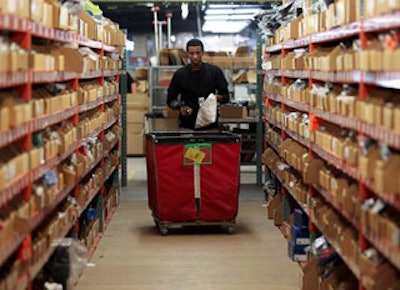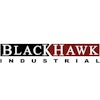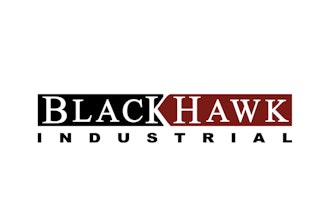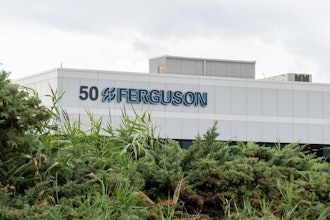
You know you have a bad warehouse when you look around your distribution center and see impromptu chat sessions, paper and label backing on the floor, cluttered aisles, open pick slots with no product, deadhead forklift travel, and dock areas that look like soccer games with 5 year olds – a moving hive of goods, equipment and people that makes no apparent progress.
It is operations like this that demand a full review of the key company business objectives and tactical analysis of the specific workflows being utilized to realize those results. In recent research conducted by Vanson Bourne and commissioned by Intermec, we found that inefficient workflows cost DC operators nearly 3,000 productive hours and $390,000 in mispicks every year. Unfortunately and all too often, distribution technology solution providers are as much to blame for these less-than-ideal situations as the DC operators themselves.
According to our research, nearly 80 percent of managers are tasked with finding cost savings from existing operations. It’s becoming imperative for managers to take a closer look at existing processes and technology throughout the year, rather than in an event of an urgent matter. There is an old saying in the consulting world the goes like this, NT+OP = EOP. It means- New Technology + Old Process = Expensive Old Process. Even in sophisticated companies that have been doing advanced distribution with best-of-breed WMS and mobile computing solutions for years, we don’t take the time to ask some basic questions:
- What has changed in my operation in the past 12 months?
- What are we seeing on the horizon that will require change in the next 12 months?
- How has the business evolved? Are my KPI’s still the right ones?
- Are we doing everything we can to improve productivity, accuracy, safety and the morale of our workforce?
Too often in the DC world, operations are usually driven by the tyranny of the urgent and we don’t make the investment to examine our situation with a critical eye.
As one example, take the process of flow-through or cross-docking. For many years this technique has been used in Europe with great success. Driven by a chronic lack of space and requirements to deliver smaller orders more frequently in densely-populated areas, European operations executives have utilized flow-through to enhance space utilization, improve labor productivity and meet tighter delivery time windows for many smaller shipments.
So why has this technique been adopted more slowly in North America? Clearly, if you can see your orders and know that material received will ship that day, why put it away? Why not move it to a temporary location, break and pick from the inbound pallet, stage and build orders in front of the outbound location and load the outbound trucks directly? It just makes sense – both economically and physically.
This is a classic example that illustrates the importance of reviewing company objectives, determining future needs, and aligning your DC workflows with the right purpose-built mobile technologies to make that happen. Dig into the key metrics you are currently using to run your business and make sure you have not only the right processes in place, but the right WMS and DC mobile technology solutions to support those processes today and, more importantly, tomorrow as your operation evolves.
Here’s how it works: take the simple activity of inventory control. There are many questions that one could ask about this workflow that may lead to a new perspective. For example, what are your inventory requirements for each shift? Where are the products you want to cycle count? How far away are the items from your people? What kinds of location labels are you using? What information do you need to capture? Would it benefit you to interleave cycle counting with other processes? Can you gain additional productivity from using 2D barcodes? These are not hard questions to ask and answer. But depending on how this process might intersect with others, such as picking, put-away, replenishment, etc., can you say you’ve thought through the implications ensuring you are driving maximum productivity and accuracy?
Operators today have a real choice to build out new or improved workflow processes that are served by specific purpose-built mobile solutions—the options are plentiful. A simple example is managing mobile returnable assets such as trays, totes and pallets. Texas-based Mission Foods is one of the largest tortilla providers in the world providing roughly 25 percent of all the tortillas sold in the US, Europe and China. As part of their distribution process, Mission Foods places all of their packaged products in returnable plastic containers (RPCs), which independent distributors then load onto their trucks. These independent distributors are then supposed to return these RPCs after their sales are complete. However, Mission Foods found that after the RPCs left the DC for deliveries in many cases they were never seen again. With a paper-based tracking process that wasn’t streamlined across their various distribution centers, they had no way to track whether RPCs were returned to a different facility, or if they were ever returned at all. Because of this, Mission Foods found they were losing and replacing nearly 100 percent of their RPCs each year.
Mission Foods management was keen to avoid changing any of their processes while fixing this lost material situation. They wanted it to be invisible to the workers on the floor of their DCs. The point here is the process decision was a conscious one. Mission Foods evaluated their process and said no changes were necessary. They implemented RFID technology, utilizing Intermec rugged mobile solutions – IF61 readers, antennas, labels and PM4i printers – and saved more than $2 million in the first year.
Bottom-line, it’s very important to work with technology solution providers that can help you see the DC operation as an eco-system of processes that are most often highly interdependent, even in what some might consider “simplistic” operations. Matching the right technology solutions to these interdependent workflows is crucial to streamlining operations and increasing productivity. Venture Development Corporation, a leading research company that focuses on mobile computing solutions into the DC and other supply chain markets, states that “the benefits of a more integrated and multi-modal approach to data collection in the DC is substantial…best in class organizations are achieving improvements in workforce productivity in excess of 20 percent.” The days of “one-size-fits-all” for mobile computing solutions is no longer relevant for companies that desire to achieve “best-in-class” WERC metrics performance. To get the desired result companies must match the right technology tools to the appropriate tasks and ensure the solution is improving results against the right business objectives.


















